Atlanta Braves: Sticky stuff pitchers and pitching coaches

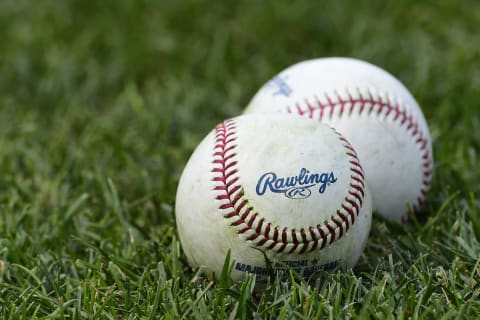
The Atlanta Braves pitchers have yet to run afoul of baseball’s crackdown on illegal substances, but they have other pitching issues to contend with.
Of all the teams in the league, the Atlanta Braves are the least likely to trip over the illegal substances rules for a couple of reasons; self-preservation and lack of candidates.
In March, MLB issued a memo to all teams advising of a coming crackdown on pitchers using foreign substances on the ball. ESPN reported that evidence gathering was substantial and proved many pitchers were using a substance to generate unnatural spin.
The first overt sign came during a bizarre scene where Joe West confiscated Giovanny Gallegos’ hat, then allowed him to go on pitching. According to Rules 3.01 and 6.02(c) and (d), West should have ejected Gallegos. Instead, He allowed him to keep pitching after getting a new hat.
I suspect West did it specifically to get MLB off top-dead-center, so he could get on with umpiring instead of collecting evidence. Intentional or not, West generated a lot of publicity, and the league did start to move.
Enforcement began on 21 June; so far, all we’ve seen in the way of enforcement is Joe Girardi being ejected, and we don’t know whether his ejection was for inciting a riot with the Nationals or abusing his right to ask for a check.
Other than that sideshow, we had Sergio Romo dropping trousers during his inspection and umpires being chastised for enforcing rule 3.07 (a) “The pitcher’s glove may not, exclusive of piping, be white, gray, or in the judgment of the umpire, distracting in any manner. . . To those who said it didn’t meet that criteria, no one cares. I digress; back to the Braves.
If a player is caught violating the rules, he’s not only an idiot but also opening his team up to the consequences of his actions because MLB’s made it clear both the player and the team may face disciplinary action.
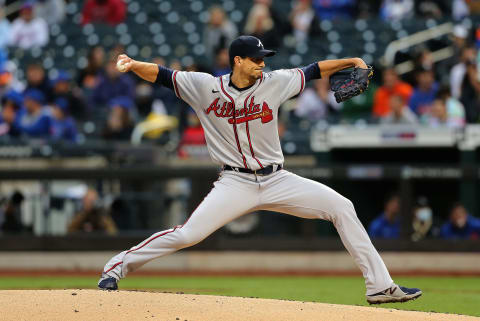
The Atlanta Braves must police their players
MLB made it clear to the clubs that the league holds the team responsible for their pitcher’s indiscretions. The player does receive a 10-game suspension, but unlike other suspensions, the suspended player still gets paid. While paying a player to sit home watching Jeopardy, the club must play a man short; the club may not replace the suspended player – or players – on the active roster.
The idea of being a pitcher short – even a less than stellar performing pitcher – must give manager Brian Snitker worse nightmares than he has after calling on one of his best and watching him implode.
The club is expected to educate players and staff on the consequences of getting caught. If an Atlanta Braves employee is found assisting, encouraging, or teaching a player to use illegal sticky stuff, the individual is subject to discipline, including placement on the ineligible list.
Related Story. Spin that ball Charlie. light
If players on a specific club violate these rules consistently, the club and staff are subject to fines and other sanctions.
Please keep in mind that a pitcher finding a way to increase spin rate does not indicate that they used a substance.
Charlie Morton and spin
I’ve seen chatter that Atlanta Braves starter Charlie Morton had a large jump in spin rate. Morton told David O’Brien in the Athletic (subscription required) that he had nothing to hide.
“I’ll say this: Ever since this became (an issue) — I was directly caught up in it in Houston, and I have never once worried, at all, about anything that could happen in this game that’s going to affect my spin rate.”
In 2011, Pirates pitching coaches suggested he study Roy Halladay and adapt to a similar style. He worked to do that and, in 2016, found himself on the Phillies alongside Halladay. The following year Houston signed him to a contract no one understood, and Morton became a star.
His fastball spin remained constant through 2019 at 2240-2250 rpm, jumped 90 points in 2020 – (probably sample size and odd-season related).
So far this year, his fastball is steady at 2336 and his sinker at almost exactly his 2017 rate. Morton’s big curve is spinning slightly more – 150 RPM – this year, but that’s likely aided by the higher seams on the ball and is only 50 RPM higher than his 2015 curve.
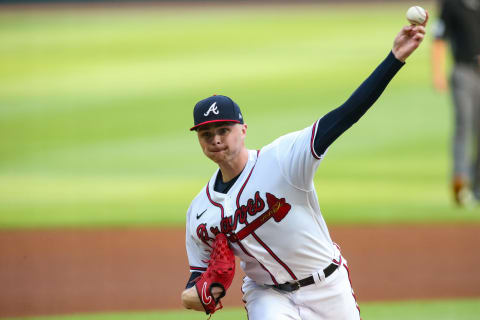
Spinning more with mixed success
Two perennial Braves’ relievers had noticeable increases in spin rate on key pitches; Luke Jackson and Sean Newcomb.
Jackson’s fastball saw a 161 RPM spike to 2304 RPM during the 2019 season but has since slipped back to around 2260. His curve jumped 108 RPM in 2018 and another 244 RPM in 2019; it fell back sharply in 2020 and currently sits at 2604 RPM in a 39 pitch sample size this year—a big jump from 2401 of 2018.
Jackson’s slider mimicked his curve jumping from 2125 in 2017 to 2576 in 2019. So far this year, Luke’s slider sits at 2502 RPM.
Newcomb’s fastball crept up slightly over the last three years, but his breaking pitches –curve and slider – peaked in 2019, coinciding with his best year to date. He hasn’t thrown enough sliders to measure this year, but his curve is registering 2940 RPM this year, the highest of his career.
According to Baseball Savant, the spin on Drew Smyly’s fastball jumped in 2020 but lost about half of the increase this year. However, his curve showed a 187 RPM increase in 2019 and another 203 RPM jump in 2020 that’s he’s sustained this year.
The years Smyly lost due to injury gave him time to get stronger and learn new techniques that helped him increase spin on his best pitches. Those two things – the curve in particular – influenced the Braves to sign him early last-offseason.
Speaking of pitching
Whenever I hear calls for firing the pitching or hitting coach, I wonder what some think a coach can do in-season to change things.
In 2013, the Atlanta Braves fought to retain Roger McDowell, giving him a two-year deal instead of the usual one-year contract with an option. Our editor at the time was happy that the deal was done.
McDowell has become one of the most respected pitching coaches in baseball, and was instrumental in honing to a fine edge the pitching prowess of such hurlers as John Smoltz, Tim Hudson, Tom Glavine, Kris Medlen, Jonny Venters, Craig Kimbrel, and many others. I’m pleased as punch to see McDowell stay. He’s so good at what he does, that beyond the next two years we’re not likely to see him in Atlanta.
McDowell lasted through the 2016 season. When he moved on, one of our writers was very glad he did.
What probably spurred the Atlanta Braves‘ decision to let him go was the lack of performance of the young pitching staff this season. We saw throughout the year guys getting called up and sent back down and getting called back up again.
Does that sound familiar?
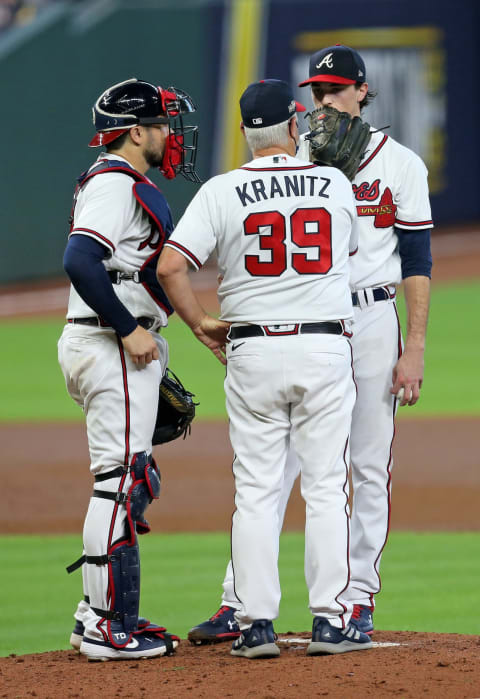
Finding fault is easy
Eleven seasons of McDowell were followed by Chuck Hernandez, promoted from within to the role he filled for Brain Snitker in the minors for two years. When Alex Anthopoulos took over, Snitker’s guy was replaced by Rick Kranitz. The Phillies let Kranitz go because they wanted his number two, who was reportedly more analytically oriented. He lasted one season and got the boot.
Kranitz never worked with the Atlanta Braves minor league pitchers outside of their time in spring training. He’s had one full season (2019), the chaos of 2020, and the current roster provided to him.
Adjusting the way a player does his job is hard
“My part in it is, I have wisdom, I have knowledge. But if I give it to him and he doesn’t get it, my wisdom and knowledge is worthless. So anything that he accomplishes, the credit goes to him.” – Ron Washington in The Athletic
Coaches can suggest, recommend, guide, and inform, but it’s always up to the player to make the needed adjustments to improve.
If a pitcher suddenly picks up a bad habit like tipping pitches, or in the case of Max Fried, rushing his delivery, a coach can point out what he sees and help with a fix. Adjustments like that are merely putting the train back on track. Changing something a player’s done for years requires the player to buy into it, work at it, and make it happen.
Sean Newcomb was a top 100 prospect for three seasons. He had walk rates of 5.0, 4.6, and 5.2 per nine in those seasons, a full season WHIP under 1.272, or a K/BB rate higher than 2.21. His best K/BB rate was 2.24 in 2019. Why does the club expect anything different? Kyle Wright has always had around a three per nine walk rate in the minors; we know those increase in the majors.
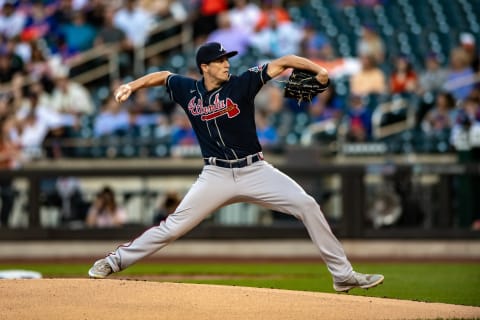
Same teachers, different test scores
Wright, Newcomb, and the other young pitchers shared the same Atlanta Braves pitching development system. Max Fried, Mike Soroka, Ian Anderson have done well, haven’t they? The story’s the same but more dramatically noticeable in the bullpen.
When McDowell was still the golden boy of pitching coaches, he was asked how he could spend hours working with a pitcher in the bullpen before games, then see them go out and do the very thing they were trying to change.
Paraphrasing here because I can’t drag up the exact quote, he said he showed them things in the bullpen, and the pitcher showed him they could do it. However, the new idea vanished when called into a game, and muscle memory and habit took over.
That’s a wrap
I’m not defending Rick Kranitz’s style, techniques, or the staff’s results. Someone will ultimately bite the bullet for the pitcher’s poor performance this season, and Kranitz is the most likely candidate. According to David O’Brien in the first linked post on The Athletic, ”. . . pitchers rarely have anything but highly complimentary things to say about him, on or off the record.”
Player development is a front office task under the control of Atlanta Braves Assistant General Manager, Player Development, Ben Sestanovich. If players reach the majors without the skills to perform there, is that the fault of the major league coaches or player development?
Next. No trades for you!. dark
I know ‘fire Sestanovich’ isn’t as easy to type, and it’s not directly his fault, but the way his staff develops the talent has far more to do with their initial success than the guy sitting in the dugout when they arrive.